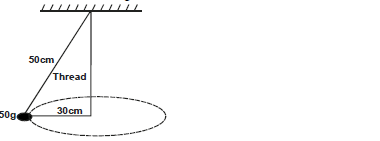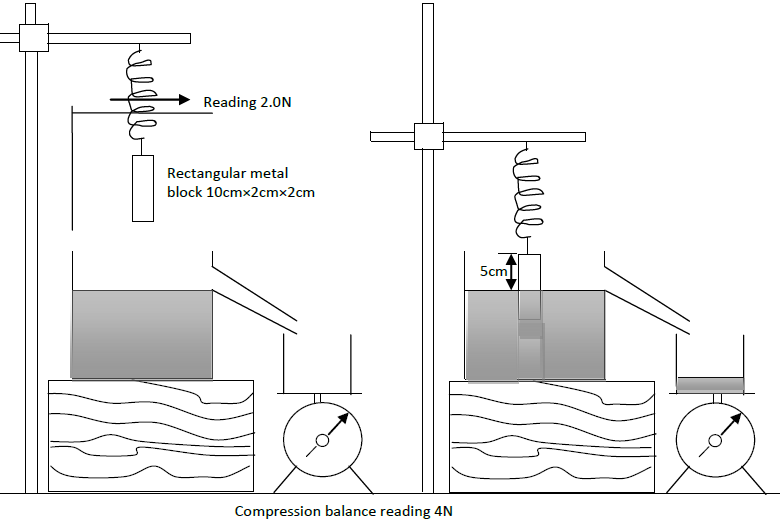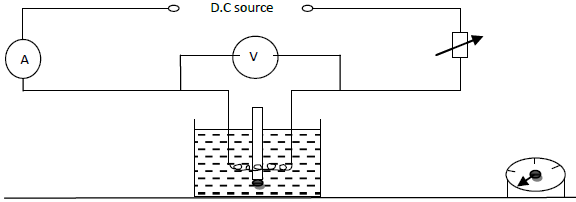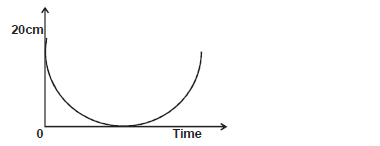Now angle of incidence = 30 + 10 = 40° ;
Angle between the incident ray and new reflected ray = 40 × 2 = 80°;
sharon kalunda answered the question on May 31, 2019 at 10:32
- An object whose height is 24cm is placed 20cm in front of a diverging lens of focal length 20cm.
Determine the image distance(Solved)
An object whose height is 24cm is placed 20cm in front of a diverging lens of focal length 20cm.
Determine the image distance
Date posted: May 31, 2019. Answers (1)
- Define power of a lens and give its units(Solved)
Define power of a lens and give its units
Date posted: May 31, 2019. Answers (1)
- Suppose that an object is attached to a spring balance on the Earth's surface and Earth's speed of rotation is gradually increased. What effect, if...(Solved)
Suppose that an object is attached to a spring balance on the Earth's surface and Earth's speed of rotation is gradually increased. What effect, if any, will this have on.
i) the gravitational attraction between the object and the Earth.
ii) the reading of the spring balance.
Date posted: May 31, 2019. Answers (1)
- Describe the changes that can be observed during discharging process of a lead –acid accumulator(Solved)
Describe the changes that can be observed during discharging process of a lead –acid accumulator
Date posted: May 31, 2019. Answers (1)
- An object put on a beam balance gives the same reading no matter where it is on the Earth's surface, but if it is on...(Solved)
An object put on a beam balance gives the same reading no matter where it is on the Earth's surface, but if it is on a very
sensitive spring balance, the reading varies from place to place. Explain why this is so.
Date posted: May 31, 2019. Answers (1)
- Give a reason why the driver of the car has to move through the same bend at a lower speed during a rainy day.(Solved)
Give a reason why the driver of the car has to move through the same bend at a lower speed during a rainy day.
Date posted: May 31, 2019. Answers (1)
- The figure shows a defective beam balance with unequal arms. The beam balances with no masses in the pans X and Y.
i)Suggest why this could...(Solved)
The figure shows a defective beam balance with unequal arms. The beam balances with no masses in the pans X and Y.

i)Suggest why this could be possible.
ii) If a mass of 300g is placed in pan Y, Calculate the mass which must be placed in pan X to restore the balance.
Date posted: May 31, 2019. Answers (1)
- Calculate the maximum speed at which the car can go round the bend without skidding if the coefficient of friction between the tyres and the...(Solved)
Calculate the maximum speed at which the car can go round the bend without skidding if the coefficient of friction between the tyres and the ground is 0.5.
Date posted: May 31, 2019. Answers (1)
- A car goes round a flat circular bend whose radius is 100m at a constant speed of 30m/s. Calculate its acceleration(Solved)
A car goes round a flat circular bend whose radius is 100m at a constant speed of 30m/s. Calculate its acceleration
Date posted: May 31, 2019. Answers (1)
- The figure below shows a small mass tied at the end of a thread and whirled to help wind the thread as a stick.
It was...(Solved)
The figure below shows a small mass tied at the end of a thread and whirled to help wind the thread as a stick.

It was observed that the linear speed of the mass increased as the length of thread reduced. Explain.
Date posted: May 31, 2019. Answers (1)
- The figure below shows a stone of mass 50g whirled using a thread of length 50cm at 5Hz to produce a cone of base radius
30cm...(Solved)
The figure below shows a stone of mass 50g whirled using a thread of length 50cm at 5Hz to produce a cone of base radius
30cm below.

i) tension on the thread.
ii) the centripetal force maintaining the frequency of 5Hz.
iii) the angular velocity of the rotation.
Date posted: May 31, 2019. Answers (1)
- The figure below shows details of an experiment performed by a student and the results taken. (take the density of water as 1.0g/cm3)
i) Calculate the...(Solved)
The figure below shows details of an experiment performed by a student and the results taken. (take the density of water as 1.0g/cm3)

i) Calculate the volume of the metal block below the water
ii) Calculate the new reading on the compression balance after the block is halfway immersed
iii) Calculate the reading you would expect to obtain on the spring balance
iv) Give a statement of the principle you have used in part (iii) above
Date posted: May 31, 2019. Answers (1)
- The figure below shows a stone whirled in a horizontal circle.
Use the information to distinguish between angular velocity and linear speed of the stone.(Solved)
The figure below shows a stone whirled in a horizontal circle.

Use the information to distinguish between angular velocity and linear speed of the stone.
Date posted: May 31, 2019. Answers (1)
- A 50W heating coil is totally immersed in 100g of water contained in an insulated flask of negligible heat capacity. The initial temperature of water...(Solved)
A 50W heating coil is totally immersed in 100g of water contained in an insulated flask of negligible heat capacity. The initial temperature of water in the flask is 20oc.
i) Determine how long it takes for the water to boil at 100oC when the heater is switched on
ii) After the water has been boiling for 15 minutes, it is found that the mass of water in the flask has decreased to 80g. Assuming no external heat losses, calculate a value for the specific latent heat of vaporization of water
Date posted: May 31, 2019. Answers (1)
- The figure below shows a set up for a demonstration to determine density of oil.
During the experiment, the distance Y = 40cm and maintained. It...(Solved)
The figure below shows a set up for a demonstration to determine density of oil.

During the experiment, the distance Y = 40cm and maintained. It was observed that when the sphere was suspended in empty beaker the distance x = 20cm.When the sphere was submerged in oil in the beaker the distance x = 16.0cm (Volume of sphere = 160cm³)
Determine:
i) Weight of sphere in air.
ii) Density of oil.
Date posted: May 31, 2019. Answers (1)
- The illustration below is used to produce a measured rise in temperature of a liquid using electrical energy.
Explain why;
i) The liquid will tend to be...(Solved)
The illustration below is used to produce a measured rise in temperature of a liquid using electrical energy.

Explain why;
i) The liquid will tend to be warmer at the top of the container than at the bottom.
ii) The temperature will eventually stop rising even though the current is still passing through the heating coil.
iii) If the apparatus is used to determine the specific heat capacity of the liquid, the accuracy of the experiment will be increased if the liquid is first cooled to about 5oc below room temperature and the current passed until the temperature is about 5oc above room temperature.
Date posted: May 31, 2019. Answers (1)
- You are provided with the following
- Test-tube
- Some sand
- Spatula
- Measuring cylinder with water
- Spring balance
Using diagrams describe an experiment to verify law of floatation.(Solved)
You are provided with the following
- Test-tube
- Some sand
- Spatula
- Measuring cylinder with water
- Spring balance
Using diagrams describe an experiment to verify law of floatation.
Date posted: May 31, 2019. Answers (1)
- A hole of area 2.0cm2 at the bottom of a tank 5m deep is closed with a cork. Determine the force on the cork when...(Solved)
A hole of area 2.0cm2 at the bottom of a tank 5m deep is closed with a cork. Determine the force on the cork when the tank is filled with sea water of density 1.2g/cm3.
Date posted: May 31, 2019. Answers (1)
- The figure below shows a block of 5kg pulled up with a force of 30N through an inclined plane at 30°.
If the surface has a...(Solved)
The figure below shows a block of 5kg pulled up with a force of 30N through an inclined plane at 30°.

If the surface has a co-efficient of 0.4m find:
i) Frictional force.
ii) Acceleration of the block.
iii) Given that the distances AB = l and BC = h, show that the velocity ratio of the incline is equal to 2.0.
Date posted: May 31, 2019. Answers (1)
- The figure below shows height - time graph for a pendulum of 120g swinging on a thread 1.0m long.
i) Determine the maximum velocity during the...(Solved)
The figure below shows height - time graph for a pendulum of 120g swinging on a thread 1.0m long.

i) Determine the maximum velocity during the swing.
ii) Use the information to explain the principle of conservation of energy.
Date posted: May 31, 2019. Answers (1)